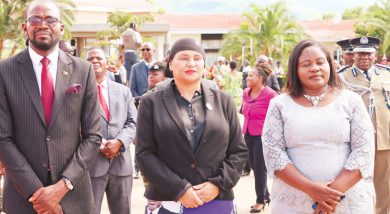Climate shocks blamed for fuelling poverty
A Malawi Poverty Assessment shows that more people have remained poor in the past decade, with some falling into the poverty trap amid rising inequality in part due to recurring climate shocks.
The assessment, published last week by the World Bank, shows that for every three Malawians that moved out of poverty between 2010 and 2019, four fell back, with around 60 percent of individuals experiencing at least one episode of poverty either in 2010, 2019 or in both years, a demonstration of the persistence of poverty.

Reads the report in part: “Malawi remains a country of grinding, existential poverty that has shown none of the meaningful progress its sub-Saharan peers have demonstrated over the last 15 years.
“The poverty gap [17 percent] and poverty severity [7.6 percent], which consider the extent to which individuals fall below the poverty line and the inequality among poor households, respectively, also remained unchanged over the same period.”
Data from the report shows that inequality fell in the first half of the decade before flattening out, but the change, due to lower consumption by better-off Malawians, reflected the weakness rather than strength of growth.
While consumption grew two percent for the poorest 40 percent, it declined for the top 60 percent, with overall consumption for the average Malawian falling by one percent in this same period.
“So, the gini-coefficient [a measure of the distribution of income across a population] decreased from 45 in 2010 to 38 in 2016, remaining at this level by 2019, putting Malawi below the average of the region.
“These dynamics would have reduced poverty, but the low consumption growth, plus population growth offset this change,” reads the report in part.
World Bank data shows that in Malawi, the poverty rate was 50.7 percent in 2010 and has remained broadly unchanged during the last decade.
The situation is no different for one Ellen Kaunda from Mzimba, who has had to survive on a monthly income of about K40 000.
She said: “I have done motor vehicle mechanics, carpentry and joinery and also painting so that I can diversify my income sources. But with limited opportunities amid rising cost of living, my life has barely improved.
“We mostly depend on farming, but the price of maize does not meet the production costs and now that farm inputs are rising, we can only hope for the best.”
The last poverty measure in 2019 showed that 50.7 percent of the country’s population, or nine million people, were living in poverty.
In 2016, the number of poor people was 8.4 million, with almost four million extremely poor.
In an interview on Tuesday, Centre for Social Concern economics governance officer Benard Mphepo observed that inequality causes a wide range of health and social-economic problems, but pro-poor policies could help address the vice.
Among others, he said profitable markets for farmers to benefit from their faming activities, increasing the minimum wage from the current K50 000 to address the rising cost of living now at K257 000 and adopting a progressive tax system.
“The government must increase free-tax band from K100 000 to K200 000 and reduce taxation rate from 25 percent to 15 percent for all people who are receiving monthly income of less than K330 000 to reduce inequality,” he said.
Economics Association of Malawi executive director Frank Chikuta said apart from perpetuating poverty, rising inequality is also not good for economic growth as it reduces demand through its effect on consumption spending.
Meanwhile, the Malawi 2063, the country’s long-term development plan, seeks to transform Malawi into a wealthy and self-reliant industrialised upper middle-income country by 2063 by focusing on inclusive wealth creation and self-reliance, built on increased productivity and commercialisation of agriculture, resource-based industrialisation and urbanisation.
The blue print projects that if the economy grows at an annual average rate of six percent, Malawi could attain the low-middle-income status by 2030, with a per capita income of between $1 006 (about K1 million) and $3 955 (about K4 million).





